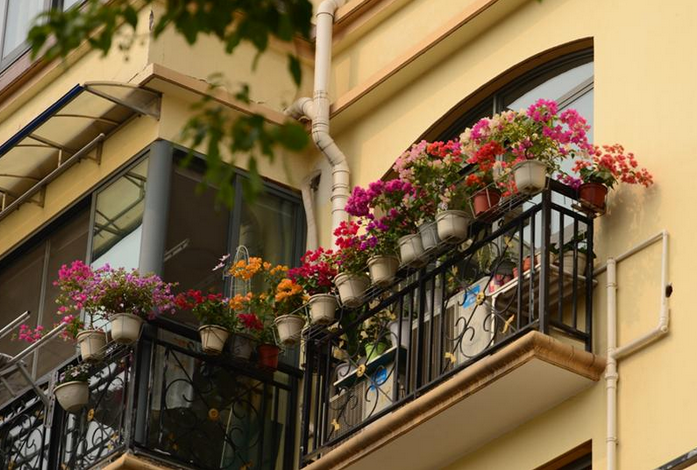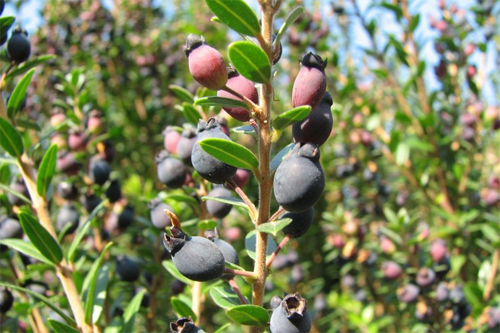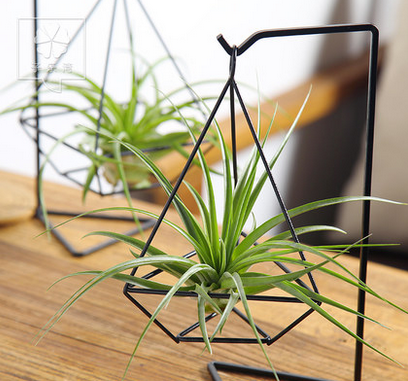Culture methods and matters needing attention of triangular plum how long is the water control period
Triangular plum leaves and flowers grow the same, that is, the color of leaves and flowers are not the same, the growth is very good-looking, is very suitable for potted plants, but there is also a problem, when planting a good triangle plum is the need to control water, how long is the period of water control?

An all-day environment
Triangular plum is an extremely sunny plant. If you want to have an explosive effect in autumn, you will spend more in all-sunshine environment.
The importance of fertilizer
Slow fertilization or mature organic manure with balanced nitrogen, phosphorus and potassium content is generally used in spring, but in August and September, flower buds begin to differentiate and form, switching to flowering fertilizer with high phosphorus content or mature bone powder with relatively high phosphorus content. at the same time, available water is often used to dissolve phosphorus.
Spray the leaves with fertilizer and irrigate the roots.
Pruning and heart-picking
During the flowering period, in order to obtain more flowers, the triangular plum can be pruned according to the desired shape before water control, the thin and weak branches can be removed, the strong branches can be cut back, and the inner chamber branches can be trimmed. The remaining branches were coring for the last time according to the standard of leaving about 4 leaves, so that the flower bud differentiation time of all branches was the same.
Water control
Then, I would like to introduce you to the water control which seems a little cruel! For the Yangtze River Delta region, in order to achieve the best florescence on National Day, it is necessary to reserve a growth period of 20-30 days for flower buds, while water control must be completed before flower bud differentiation, and the water control period is as long as three weeks (water control usually begins on August 10-15). At this time, the temperature is still very high, fully watered potted triangular plum can dry the pot soil in one day, and it does not need watering at this time. It continues to bask in the sun until the leaves continue to wilt the next morning. A small amount of water can be supplied in the tray at the bottom of the basin soil. After wilting for three or five days in a row, you can thoroughly supply water once, and then continue the cycle.
After repeated several times, the triangular plum will appear old leaves yellow and fall, and even the whole plant has few leaves, do not worry, this is the plant's self-protection.
After about three weeks of water control period, after completing flower bud differentiation, you can use instant water-soluble phosphate fertilizer to spray leaves and irrigate roots once a week to promote flower bud growth, and then all you need to do is wait for the autumn of triangular plum to be amazing.
It takes patience to grow flowers, otherwise you can't grow them well. This is the end of the breeding methods and matters needing attention of triangular plum.
How to raise triangular plum, culture methods and precautions of potted triangular plum / not afraid of exposure
As a good product of indoor breeding, triangular plum is believed to be no stranger to flowers. it is rich in design and color, and the flower is shaped like a triangular plum. In life, from time to time, there will be novices to raise triangular plum, they want to know how to raise triangular plum. In this regard, the editor carefully sorted out the cultivation methods and matters needing attention of potted triangular plum, which is very comprehensive. Friends who want to raise must have a look.
First, how to raise triangulated plums and understand their habits
Growing plants indoors, unlike outdoors, we need to create everything ourselves. As for how to raise triangulated plum, we should first understand the growth habits of triangular plum, and then satisfy it. More specifically, all in the triangle plum culture methods and matters needing attention, we continue to look down.
2. Culture methods and matters needing attention of potted triangular plum
1. Potted soil, loose and fertile
Potted triangular plum how to raise, first of all, the natural choice of pot soil. First of all, flowerpots: triangular plum flowerpots should choose rectangular or oval purple sand pottery pots, and the color can not be too deep, which can set off the beauty of triangular plum flowers. The second is soil: it is best to use nutrient soil that contains humus, loose and well drained.
For family potted plum, you can choose the following soil formula: 5 parts of garden soil, 3 parts of rotten leaf soil, 2 parts of rotten leaf soil, or 5 parts of peat soil, 2 parts of rotten leaf soil, 2 parts of sand and 1 part of perlite.
Note: in the cultivation method of triangulated plum, although triangulated plum does not have high requirements for soil, it does not use clay. Flower friends had better choose sandy soil rich in humus, loose, fertile and permeable.
2. Temperature, 15: 30 ℃
In the cultivation methods and matters needing attention of potted triangular plum, the temperature is something we must pay attention to. If you want to raise triangulated plum well, you'd better put it in an environment with a temperature of 15-30 ℃.
Note: triangular flower is not cold-resistant, once the temperature is lower than 5 ℃, it will affect plant growth, resulting in the phenomenon of fallen leaves. Although the leaves will grow again in spring after falling leaves in winter, they do not grow well. So in winter, we'd better keep it outside at about 10 ℃.
3. light, not afraid of exposure
Triangle plum Xiguang, in addition to the new pot seedlings should first be placed in the semi-shade, the rest of the time to maintain sufficient light. Especially in winter, we must make sure that the light time is not less than 8 disappear, otherwise it is easy to produce a large number of fallen leaves.
Note: unlike other plants, triangular plums are not afraid of exposure, so no matter in winter or summer, everyone can be put outdoors to withstand the test of the sun, which is good for flowering. Once the light is insufficient, the growth of new branches will be weak, the leaves will be dim, and there will be little or no flowering.
4. Watering
How to raise triangular plum, watering is also an essential part. Spring and autumn: watering once a day; summer: watering once in the morning and evening; in winter: watering should be controlled, watering once every morning and evening after the emergence of flower buds. However, watering can not be too much, it is easy to cause rotten roots, it is best to grasp the principle of "do not dry, do not water, water must be thoroughly" principle.
Note: starting from September, the watering of triangular plum leaves and flowers should be controlled every time until the basin soil is dry and the branches and leaves are soft and sagging, and then return to normal watering after half a month like this. Pay attention to avoid fertilization during the period of water control, so as not to burn the roots of fertilizer.
5. Fertilization
In the cultivation methods and matters needing attention of potted triangular plum, after watering well, naturally there can be no shortage of fertilizer. In the growing period, it is necessary to fertilize properly in order to meet the growth needs of triangulated plum.
Note: the fertilizer used in fertilization should be rotten, in addition, the number of fertilization should be more, but the amount of each time should be less, and the concentration should be light, otherwise it is easy to damage the root system and affect the plant growth.
III. Matters needing attention in the culture of triangular plum
In the culture method of triangular plum above, several points that need to be paid attention to have been mentioned, which I believe we should remember. However, in addition to the above mentioned, there are three points that flower friends need to pay attention to, that is, pruning, changing pots and pest control. The matters needing attention in the culture of triangular plum are as follows:
1. Pruning
In the breeding process of triangular plum, proper pruning can make it look more beautiful. As for how to do it, we can cut off the secret branches and weak branches in accordance with the principle of "short, heavy and sparse". As for how to trim the triangular plum, there is a more specific introduction, so I won't say much here.
2. Change the basin
It is understood that the growth rate of triangular plum is very fast, and there are many roots, so the soil is easy to deteriorate, become very strong and impervious, which is not conducive to the growth of the plant. So what we need to do is to change the basin once a year to make the triangular plum refreshing.
3. Pest control
In the growth process of triangular plum, it will inevitably be affected by diseases and insect pests, of which the main diseases are: shoot blight, the main pests are: leaf beetles and aphids, once found, we should immediately solve. As for how to do it, there is a detailed introduction in the pest control of Triangle Plum, so I won't say much here.
Generally speaking, triangular plum is adaptable, so it is not difficult to raise, just need everyone to be careful at ordinary times. With regard to the breeding method of triangular plum, the editor has introduced it here, hoping to bring help to everyone. Finally, I wish everyone's triangle plum can blossom beautifully.
The Culture method of Triangulated Prunus mume
Triangular plum is mostly planted in the courtyard in the south and is suitable for pot culture in the north. The following are the breeding methods and matters needing attention of Triangle Plum, which we have sorted out for you. I hope we can help you!
Culture method of triangulated plum
Soil: the leaf flower is not strict with the soil, but it is afraid of stagnant water and is not resistant to waterlogging, so it is necessary to choose the cultivated soil with loose and good drainage. Generally, 4 parts of humus soil, 4 parts of garden soil and 2 parts of sand can be selected, and sun-dried pond mud mixed with some coal cake dregs can also be used as basin soil. Avoid using clay.
Watering: in the spring and summer plum growing season, watering once a day to ensure the growth of branches and leaves. From May to June, it is necessary to control watering, and the degree of water control is to wilt the tender shoots and leaves of Prunus mume, then spray water on the leaves twice a day and water once again after 2-3 days. Repeatedly controlling water for several times or watering every other day can promote the flower bud differentiation of Prunus mume. When the flower buds appear on the new shoots of Prunus mume, water is watered once in the morning and once in the evening, and water is sprayed on the leaf surface twice.
After October, the soil was properly watered according to the degree of dryness and wetness of the soil. In winter, people must not water too much behind the room. to water triangular plums, we should grasp the principle of "do not dry, do not water, water thoroughly". Wait until next spring, triangular plum sprouts and grow leaves, and then gradually increase the amount of water, otherwise it will lead to rotten roots and death.
Temperature: Prunus triangulata is a tropical plant, the optimum temperature for growth is 15-25 ℃, and the optimum temperature for flowering is 15-30 ℃. Triangulated plum likes the climate of high temperature and humidity, and is more resistant to dry heat, cold and frost. In the environment of 10-32 ℃, the growth of triangular plum is normal, and the winter temperature should not be lower than 7 ℃, otherwise it will freeze or even die.
Sunshine: triangular plum is a strong positive plant, if the light is sufficient, the flowers will bloom more and the color will be bright. If the light is insufficient, the branches and leaves grow luxuriantly and do not blossom or blossom less, and the flower color is dim. Triangular plum must be placed in a sunny place during the growing season to ensure that there is light throughout the day and can only be placed indoors for a short time.
Fertilization: in order to make the leaf flowers blossom more, we must ensure adequate nutrients, while fertilization should be timely, appropriate amount, rational use. In general, during the peak growth period from April to July, liquid fertilizer is applied every 7 to 10 days to promote plant growth. Fertilizer can use 10% to 20% cooked bean cake, rapeseed cake water or human feces water. Since August, in order to promote the gestation of flower buds, fertilizer based on phosphate fertilizer has been applied every 10 days, and 20% liquid fertilizer such as rotten chicken, duck, pigeon dung and fish can be used. From October to mid-November, it is necessary to apply phosphate-based fertilizer every half a month, with a fertilizer concentration of 30% to 40%. In the future, topdressing should be applied once after each flowering, so that the leaf flowers will continue to get nutrients during the flowering period. When small buds can be seen in the axils of triangular plum leaves, it is necessary to increase the application of available phosphorus and potassium foliar fertilizer. 0.3% Mel 0.5% rotten cake fertilizer, alum and water are applied once a week during the full blooming period of triangular plum, and 0.3% potassium dihydrogen phosphate is often sprayed until mid-November.
Pruning: trim plum should grasp the principle of "short, heavy and sparse", that is, cut short horizontal branches and re-cut new branches. Remove dense branches and weak branches. Safflower triangular plum grows weakly, pruning about once a year from March to April, and purple triangular plum needs to be fully pruned twice a year, the first before germination from March to April, and the second before the growth of new branches after flowering from November to December, in order to ensure exuberant flowering every year.
Diseases and insect pests: there are fewer diseases and insect pests in triangular plum. During the period from winter to spring, it was observed that the general pests were diamondback moth and shell insects, and manual removal was the main method for family cultivation.
Matters needing attention in the culture of triangular plum
1. In hot summer and winter, triangulated plum grows slowly or enters dormancy, so fertilizer should be stopped to avoid fertilizer damage.
2. When applying fertilizer to triangular plum, we should pay attention not to apply thick fertilizer or raw fertilizer (organic fertilizer which is not fully mature) to prevent root injury, leaf coke shedding and even the death of the whole plant.
3. In the cold winter, the triangular plum should be moved indoors to avoid frostbite.
The Propagation method of Prunus mume
Cuttings: cut the 2-year-old triangular plum branches into 10 cm long cuttings and insert them into the culture soil (add 1/3 humus or sawdust with plain sandy soil and stir well with proper amount of water). Seal with plastic film after insertion. The temperature is 20 ℃ to 25 ℃, it can take root in 25 days, and it can be divided into pots in 2 to 3 months.
High cutting: if you want to obtain ideal new seedlings of triangular plum, you should use high-altitude cuttings to propagate. This method does not affect the growth of the original plant, and can obtain complete new seedlings, so it is often used by family flower growers, and the method is simple, the survival rate is high, the later transplantation is convenient and easy to manage.
Triangular plum
- Prev

Producing area and price of myrtle planting technology
Myrtle's fruit is also very good-looking, but also can open beautiful flowers, so attractive myrtle how to plant it? What are the precautions in the process of planting? Where is Myrtle from? How much does it cost per jin? Planting technique of Myrtle: seed collection of Myrtle planting
- Next

How to keep the air pineapple? what's the price?
What the hell is an air pineapple? does it look like a pineapple? This is really different from pineapple, this air pineapple is ornamental, no result, air pineapple is very easy to raise, but there are still some tips in the process of breeding. What is the price of air pineapple?
Related
- Fuxing push coffee new agricultural production and marketing class: lack of small-scale processing plants
- Jujube rice field leisure farm deep ploughing Yilan for five years to create a space for organic food and play
- Nongyu Farm-A trial of organic papaya for brave women with advanced technology
- Four points for attention in the prevention and control of diseases and insect pests of edible fungi
- How to add nutrient solution to Edible Fungi
- Is there any good way to control edible fungus mites?
- Open Inoculation Technology of Edible Fungi
- Is there any clever way to use fertilizer for edible fungus in winter?
- What agents are used to kill the pathogens of edible fungi in the mushroom shed?
- Rapid drying of Edible Fungi

